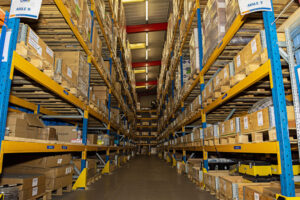Why connections are key to powering greater connectivity
Henry Ford once famously said: “Coming together is a beginning, staying together is progress, and working together is success.”
When you look at the challenges facing the UK telecoms supply chain, such a statement seems appropriate. The UK is on the road to a more connected infrastructure which, once successful, will drive electric vehicle adoption and accelerate the transformation towards smart cities. As we work towards these goals, we must embrace and roll out new technologies such as 5G, which will be critical to enabling the type of hybrid work environments the country has already begun to trial.
The only way we can make this a success is through effective collaboration across the value chain. We are operating in a market that was previously fragmented, consisting of the big two national telecoms providers, sitting atop a family of tier one suppliers, with innovative start-ups often sitting at the bottom of the chain. This has already started to become disrupted with the rise of alternative networks (Alt-Nets) – companies building their own independent full-fibre telecommunications networks, which stretch across this traditional hierarchy. However, if the sector is to truly reach the ambitious targets of UK authorities and demanding consumers, this typical market model will need to be disrupted even further.
Today’s telecoms market is heavily fragmented. Major network operators have to focus on increasing their revenue streams and often lack the innovation, agility and rapid scalability they need to achieve through product or network diversification. Cue the role of the start-up; businesses which are able to provide more mobile-centric, innovative approaches to infrastructure networks which major operators can utilise to help consumers better meet their everyday connectivity needs.
However, with the right collaboration, gains can also be made even further down the value chain. For example, smaller details such as the materials used to build critical data cabinets can also aid connectivity goals. Polycarbonate for example, has no effect on radio frequency (RF) signals, allowing 4G and 5G signals to pass through, unlike metal alternatives that block these frequencies. This means that polycarbonate cabinets can add value through a secondary use, for example, for housing sensors used for monitoring and data collection purposes. Such a multi-use opportunity can only be realised with the right collaboration and value chain connections.
As we move towards the UK’s connectivity goals, it is essential that value chain businesses make connections beyond services, working together to set new standards for innovation and infrastructure design. While official standards and legislation do exist, they are at a broader level, with little to no standards at micro level. If we are to fully embrace digitalisation and a more connected infrastructure, we must have as much attention paid to materials, and physical infrastructure as we do on technological transformation.
Everything from which materials can be used to manufacture active data cabinets, to the best installation of such equipment to minimise environmental and noise impact – all need to be evaluated. The only way to do this is by motivating and bringing together the SME telecoms value chain, to create a voice that is in harmony with the many telecom providers, and which reflects opinion on the ground.
At CHH CoNeX, we have always believed in making the right connections across the value chain to drive collaboration and new ways of working. As we continue to deliver on the country’s network ambitions, it is critical that we continue to follow an ethos of cooperation and support, with businesses working together to set new standards for the design, implementation and operation of digital infrastructure. Only by making connections with each other, can we successfully connect Britain.








